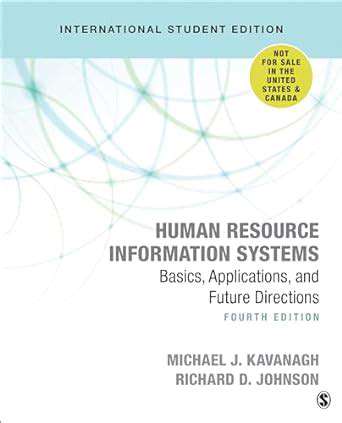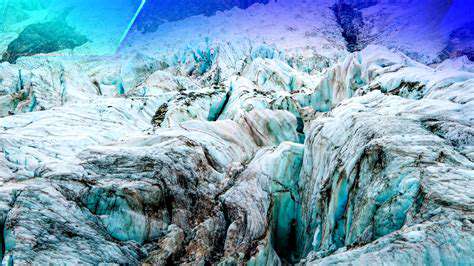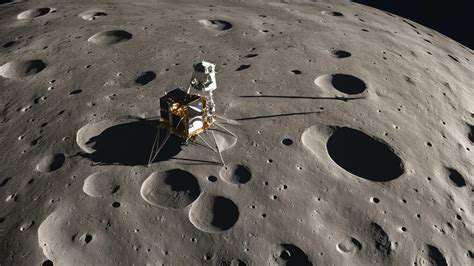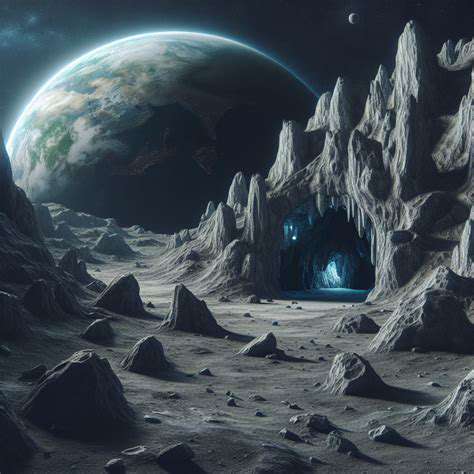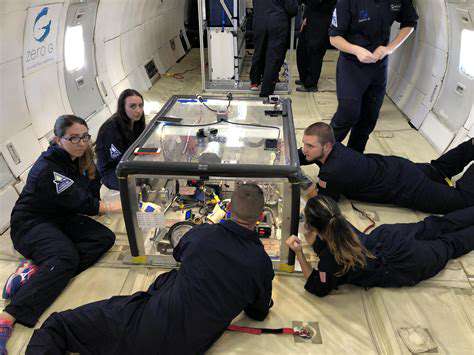Introduction to Lunar Soil Properties
Lunar Soil Composition
Lunar soil, or regolith, consists of crushed rock, minerals, and glass particles shaped by billions of years of meteor strikes, volcanic eruptions, and solar wind exposure. This powdery layer blankets the Moon's surface, reaching depths from a few centimeters to several meters, hiding the bedrock underneath. Composition differs across lunar regions due to localized geological events and impact intensity.
Accurate analysis of lunar soil chemistry is vital for upcoming missions. Such data guides landing site selection, resource extraction methods, and habitat construction. Elemental makeup varies noticeably between lunar areas, reflecting the diverse geological forces that formed the Moon's landscape.
Mechanical Properties of Lunar Soil
Lunar soil displays mechanical characteristics unlike Earth's soils. Its lightweight nature and absence of binding materials make it prone to shifting under minimal pressure. Without water or organic compounds, its stress response differs fundamentally from terrestrial soils.
Additionally, the regolith's grainy texture and fine particles create high porosity and weak shear resistance. These traits are crucial for predicting how lunar soil handles weight and digging – essential knowledge for safe vehicle operation and construction projects.
Thermal Properties of Lunar Soil
Lunar soil possesses remarkable thermal qualities, mainly due to poor heat conduction and high porosity. Without an atmosphere, temperatures swing dramatically between lunar day and night. These extremes significantly influence soil behavior, affecting structure stability and equipment performance.
The regolith's heat storage capacity has major implications for designing thermal management systems in lunar bases and spacecraft. Comprehending these thermal characteristics helps counterbalance extreme temperature effects on lunar operations.
Lunar Soil Strength and Cohesion
Lunar soil shows substantially less strength and cohesion than Earth soils. Absence of water and organic material, combined with its fragmented, sandy nature, results in extremely low shear resistance. This factor is critical for any construction or digging activities planned for the Moon.
Lunar Soil Permeability
Permeability is another key trait affecting lunar soil behavior. High porosity and granular structure create relatively good permeability, enabling gas and liquid movement through the soil. This characteristic influences habitat design and water extraction methods.
Understanding regolith permeability helps predict volatile movement or dust particle behavior in the lunar setting. Such knowledge is indispensable for sustaining long-term lunar operations.
Lunar Soil Moisture and Water Ice
Water ice presence and distribution in lunar soil represent a precious resource for future missions. Locating and studying ice deposits is crucial for establishing permanent lunar bases. Understanding water-regolith interaction is key to developing extraction and utilization techniques.
Lunar Soil Dust and its Implications
Lunar dust, a major regolith component, presents serious challenges for equipment and astronaut health. Its fine, abrasive particles can damage spacecraft parts and pose inhalation risks. Developing protective measures is essential for successful long-term exploration.
Detailed knowledge of dust distribution and behavior is necessary for creating safety protocols and equipment safeguards. This information protects astronaut health and ensures equipment durability in the lunar environment.
Mechanical Behavior of Lunar Regolith
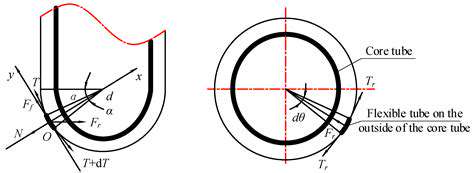
Mechanical Properties of Lunar Soil
Lunar regolith demonstrates distinctive mechanical properties that vary greatly from Earth soils. These differences critically impact future exploration and resource use, affecting equipment and infrastructure design. Strength and consistency fluctuate based on particle size and compaction levels. Predicting its behavior in different applications proves complex. The Moon's weak gravity alters regolith behavior, changing its shear strength and stability under various loads.
Influence of Particle Size Distribution
Particle size distribution dramatically affects lunar regolith's mechanical characteristics. Tiny particles show more cohesion and plasticity, while larger grains provide greater strength and stability. This particle interaction determines overall strength and deformation potential, influencing stress response. Understanding these distributions helps design safer lunar structures and equipment.
Particle size variations significantly alter regolith behavior, making this a vital consideration for mission planning.
Compaction and Consolidation
Compaction greatly influences lunar regolith's mechanical behavior. Processes like lander impacts or rover movement can change regolith density and strength. Compaction may create hardened layers, modifying material response to external forces. Understanding these changes helps predict long-term stability of lunar installations.
Shear Strength and Failure Mechanisms
Shear strength is crucial for assessing regolith stability under different loads. Multiple factors affect this property, including particle size, compaction, and minimal moisture content. Identifying failure patterns in lunar regolith is essential for astronaut safety. Knowing how regolith responds to shear forces helps design structures that endure lunar conditions.
Impact Resistance and Penetration
Impact resistance is critical for lunar vehicle design. The material's ability to withstand landing and movement forces ensures vehicle safety. Penetration characteristics also matter for resource extraction tools and scientific instruments. Forecasting regolith response to vehicle impacts remains a major engineering challenge.
Thermal Effects on Mechanical Properties
Lunar regolith undergoes extreme temperature changes during the lunar cycle. These fluctuations affect material strength, cohesion, and flexibility. Understanding thermal impacts helps design equipment and structures that survive these harsh conditions. Thermal expansion and contraction must be considered to ensure long-term installation stability.
Experimental Techniques and Modeling Approaches
Experimental Techniques for Lunar Soil Mechanics
Studying lunar soil mechanics is fundamental for future exploration and resource use. Experimental methods help characterize regolith's unique traits, including strength, flexibility, and shear resistance. These tests must simulate low gravity, varied particle sizes, and account for radiation and temperature effects. Researchers use advanced methods like triaxial testing, direct shear tests, and cyclic loading to examine soil response under different conditions.
Specialized testing equipment operating in vacuum and controlled temperatures is essential. This advanced apparatus enables precise material property measurements, contributing to accurate lunar soil models. Systematic analysis of these results improves our understanding of regolith structure and behavior, supporting future missions and infrastructure projects.
Modeling Approaches for Lunar Soil Behavior
Creating precise models to predict lunar soil behavior under various loads is crucial for engineering applications. Multiple modeling approaches exist, including phenomenological models, constitutive models, and numerical simulations. Phenomenological models use experimental data relationships to simplify material behavior representation, though they may miss some granular interactions.
Constitutive models instead focus on internal material mechanisms. These incorporate parameters describing microstructure, particle interactions, and deformation processes. Model choice depends on application needs and required detail levels. Numerical methods like finite element analysis help simulate complex loading situations and analyze lunar structure stability. These simulations can include various soil properties and conditions, providing comprehensive understanding of soil-structure interactions.
Influence of Lunar Environment on Soil Properties
The Moon's unique environment significantly affects regolith mechanics. Factors like no atmosphere, extreme temperature swings, and high radiation levels directly influence soil strength, flexibility, and durability. Understanding these effects is critical for accurate behavior prediction and sustainable base design. Radiation can gradually change material microstructure and reduce strength.
Severe temperature variations between lunar day and night create thermal stresses potentially weakening material cohesion. No atmosphere means negligible pore water pressure – a key factor in Earth soil mechanics. These unusual conditions demand specialized modeling and analysis methods to predict long-term regolith behavior under various loads and environmental stresses. This detailed understanding is vital for ensuring safety and durability of future lunar operations.
Applications in Lunar Engineering and Resource Utilization
Lunar soil mechanics research directly impacts future engineering and resource use. Precise models and experimental data are necessary for designing Moon structures, including habitats, landing areas, and mining facilities. Understanding regolith mechanics ensures these installations remain stable and durable. Efficient resource extraction methods also depend heavily on soil mechanics knowledge. Accurate behavior prediction enables development of strong, long-lasting infrastructure, supporting sustainable lunar activities.
